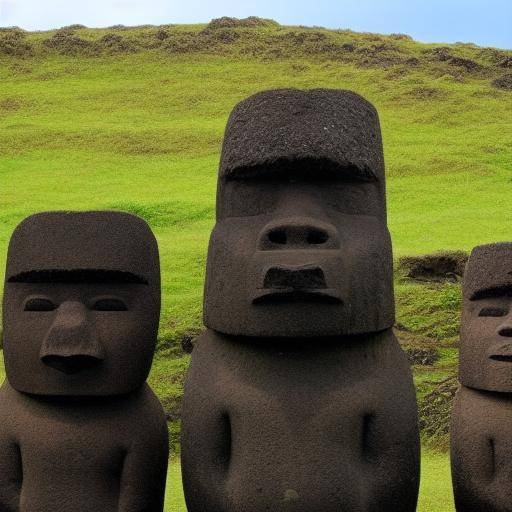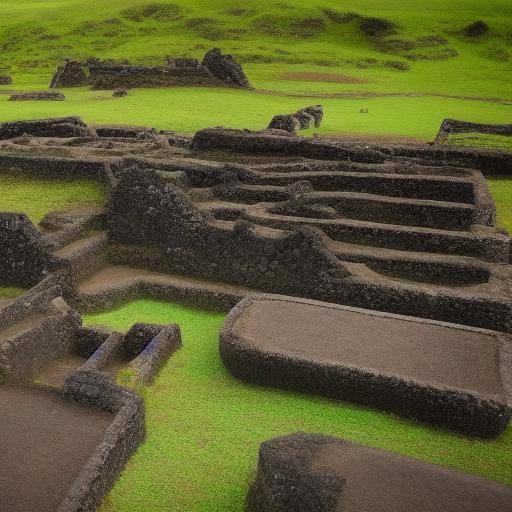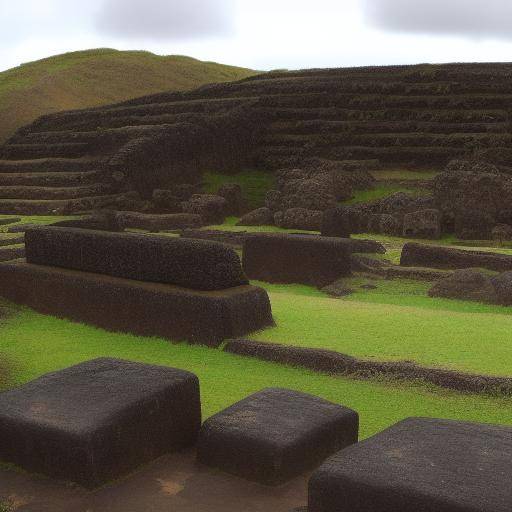
Welcome to the mysterious and fascinating Easter Island, known for its enigmatic mois and rich history. However, beyond these emblematic treasures, the island offers a world of natural wonders, living culture, and a unique travel experience worth exploring. In this article, we will discover how to fully enjoy Easter Island and its hidden treasures, beyond the Mois and history.
Introduction
Easter Island, also known as Rapa Nui in its native language, is a remote island destination in the South Pacific that is part of Chile. It is located almost 3,700 kilometers from the Chilean coast and is famous for its monumental stone statues, the Mois, which constitute a unique archaeological and cultural enigma in the world. However, this island contains much more than tourist postcards reveal. From its stunning natural landscapes to its vibrant Polynesian culture, Rapa Nui is a destination that enamories those who venture to discover its secrets.
History and Culture
Origins and Resettlement
The story of Rapa Nui dates back more than a thousand years, when a group of Polynesians sailed to this remote island in canoes. This journey of discovery and colonization marked the beginning of the rich Rapa Nui culture, which has been preserved over the centuries and remains an integral part of the identity of its inhabitants.
European exploration and annexation to Chile
The arrival of Europeans in the 18th century brought significant changes to Rapa Nui, including cultural influence and annexation to Chile in 1888. This period of changes and challenges shaped the evolution of the island, its people and its relationship with the outside world.
Tourist Development and Current Challenges
As tourism became an important industry for Rapa Nui, challenges arise around the preservation of cultural heritage, sustainable development and responsible management of natural resources. These challenges have led to greater interest in exploring the island beyond conventional tourist sites, promoting responsible and respectful tourism.
Natural Landscapes and Biodiversity
Rapa Nui National Park
The Rapa Nui National Park covers much of the island and hosts a range of ecosystems, including extinct volcanoes, white sandy beaches, coastal meadows and palm trees. Visitors can explore these unique landscapes through well-preserved trails that offer stunning views and the opportunity to connect with nature.
Marina Motu Motiro Hiva Reserve
The surrounding waters of Rapa Nui host a rich marine diversity, including coral reefs, tropical fish, sea turtles and marine mammals. The Motu Motiro Hiva Marina Reserve protects these waters, offering opportunities for diving, snorkeling and wildlife sighting in a pristine and unparalleled environment.
Live culture and traditions
Polynesian Dances and Traditional Music
The Rapa Nui culture is expressed through its traditional dances, music and arts, which reflect the deep connection with Polynesian nature and heritage. Travelers have the opportunity to witness live performances that celebrate ancestral traditions and the vitality of local culture.
Crafts and Wooden Cutting
The artisans of Rapa Nui continue the tradition of carving in wood, creating unique pieces that represent the iconography Rapa Nui, such as mois, birds, seabirds and other motifs inspired by nature. These creations are a way to preserve and share the island's rich artistic heritage, and visitors have the opportunity to acquire these works as significant memories of their experience in Rapa Nui.
Local cuisine and unique flavors
Southern Ingredients and Traditional Platos
The cuisine of Rapa Nui is a fusion of polynesian and Latin American influences, using indigenous ingredients such as taro, banana, tuna, seafood and sweet potatoes. Traditional dishes, such as fresh fish ceviche and healer, a culinary preparation cooked underground, offer a unique culinary experience that reflects the identity and environment of the island.
Local Markets and Gastronomic Experiences
Local markets offer the opportunity to discover fresh products and crafts, as well as to try dishes prepared by local chefs who capture the essence of Rapa Nui cuisine. These gastronomic experiences provide an authentic view of everyday life on the island and reflect the importance of food in local culture.
Conclusions
Easter Island, much more than a renowned tourist destination, is a fascinating place that offers a unique combination of history, culture, nature and hospitality. By exploring beyond the Mois and history, travelers can discover the essence that makes Rapa Nui such a special destination. From its amazing landscapes to its living traditions, Easter Island invites an enriching travel experience and lasting memories.
As Rapa Nui opens to the world, the preservation of its cultural heritage and environmental sustainability are more important than ever. Travelling to this remote land with open mind and respect for its inhabitants is an opportunity to immerse yourself in a different reality, discovering meaningful connections and leaving a positive footprint.
Frequently asked questions
1. What is the best time to visit Easter Island?
The best time to visit Easter Island is during the dry season, which runs from September to April. During these months, the climate is more stable and the conditions are ideal for enjoying the beaches and exploring the archaeological sites outdoors.
2. What measures are being taken to preserve the cultural heritage of Rapa Nui?
Local authorities and international organizations are working together to preserve the cultural heritage of Rapa Nui through conservation, education and sustainable tourism programmes. Regulations have been implemented to protect archaeological sites and promote a respectful approach to local culture.
3. Are there sustainable accommodation options on Easter Island?
Yes, Easter Island offers sustainable accommodation options that promote environmentally friendly practices and the local community. From eco-hotels to family accommodation, visitors can choose options that support the island's sustainable development.
4. Is it possible to participate in volunteer activities or community projects on Easter Island?
Yes, there are volunteer programs and community projects in Rapa Nui that offer the opportunity to engage in conservation, education and social development initiatives. These experiences provide a significant way of contributing to the well-being of the local community and getting to know it more closely.
5. What measures are being taken to protect marine biodiversity in the Motu Motiro Hiva Marine Reserve?
The Motu Motiro Hiva Marina Reserve is subject to strict regulations aimed at preserving marine biodiversity, including areas for the protection and monitoring of fishing activities. Awareness is encouraged on the importance of conserving these ecosystems and responsible tourism is promoted in order to minimize the impact on marine habitats.
6. What are some of the ways in which travelers can support the local community during their visit to Easter Island?
Travelers can support the local community by purchasing artisanal products, participating in cultural activities and respecting local traditions and customs. In addition, collaborating with local-owned businesses and choosing sustainable tourism options directly contributes to the well-being of the community and the economic development of the island.
By enjoying Easter Island beyond the Mois and history, travelers have the opportunity to enrich their travel experiences, connect with local culture and contribute to the care of this island treasure. Rapa Nui hopes to be discovered in its entirety, revealing its beauty and mysteries to those who venture to explore it with respect, curiosity and openness. Welcome to Easter Island!
Sources:
- Conaf.cl: Official website of the National Forestry Corporation, which provides detailed information about the Rapa Nui National Park.
- RapaNui.org: Organization dedicated to the preservation of the culture and heritage of Rapa Nui.
- EveryCulture.com: Information on the culture and history of Rapa Nui.
This article provides an integral view of Easter Island, presenting its fascinating history, rich culture, stunning natural landscapes and commitment to sustainability. By exploring Rapa Nui beyond mois and history, readers can immerse themselves in the essence and beauty of this unique destiny in the world. Discover the Easter Island in all its greatness!



